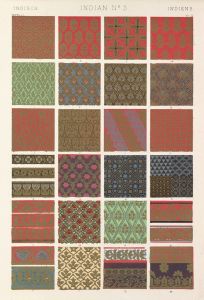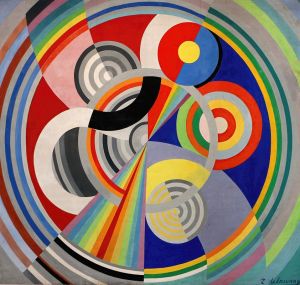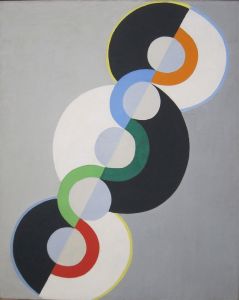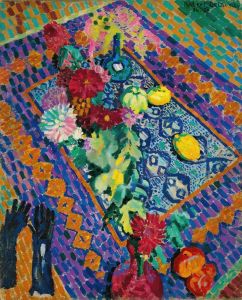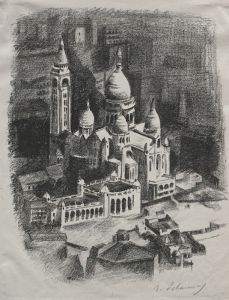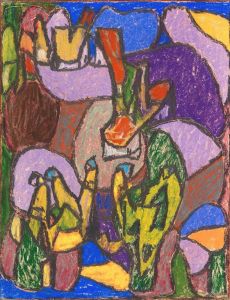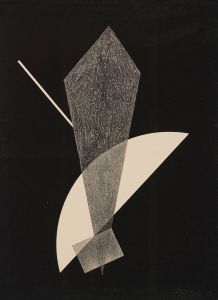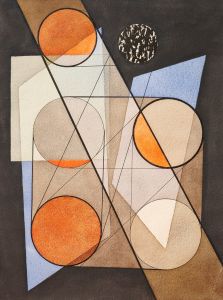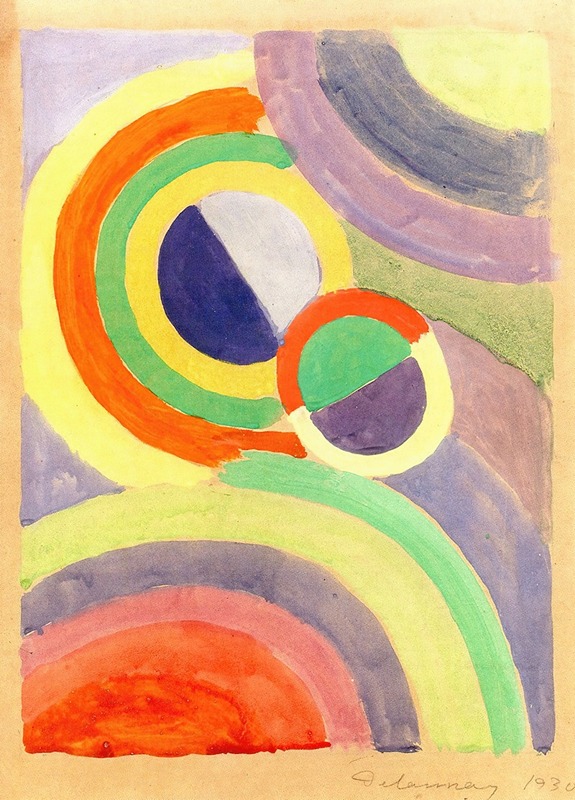
Composition
A hand-painted replica of Robert Delaunay’s masterpiece Composition, meticulously crafted by professional artists to capture the true essence of the original. Each piece is created with museum-quality canvas and rare mineral pigments, carefully painted by experienced artists with delicate brushstrokes and rich, layered colors to perfectly recreate the texture of the original artwork. Unlike machine-printed reproductions, this hand-painted version brings the painting to life, infused with the artist’s emotions and skill in every stroke. Whether for personal collection or home decoration, it instantly elevates the artistic atmosphere of any space.
Robert Delaunay, a prominent French artist, is best known for his contributions to the Orphism art movement, which is characterized by its use of strong colors and geometric shapes. One of his notable works is "Composition," a painting that exemplifies his innovative approach to abstraction and color theory.
"Composition" by Robert Delaunay is a vivid example of his exploration of color and form. Delaunay was deeply influenced by the scientific theories of color and perception, particularly those of Michel-Eugène Chevreul and Hermann von Helmholtz. These influences are evident in "Composition," where Delaunay employs contrasting colors to create a sense of depth and movement. The painting is a study in how colors interact with each other, a central theme in Delaunay's work.
The painting is composed of overlapping circular forms and vibrant hues, which create a dynamic visual experience. This use of circular forms is a hallmark of Delaunay's style, reflecting his interest in the endless possibilities of color and form. The circles in "Composition" are not merely decorative; they are meant to evoke a sense of rhythm and harmony, akin to musical compositions. This connection between visual art and music is a key aspect of Orphism, the movement Delaunay helped to pioneer.
Delaunay's "Composition" is also significant for its departure from traditional representation. Unlike many of his contemporaries, who focused on depicting the natural world, Delaunay was more interested in conveying the sensation of movement and light. This focus on abstraction was revolutionary at the time and paved the way for future developments in modern art. By emphasizing color and form over representational accuracy, Delaunay challenged viewers to see art in a new way.
The painting reflects Delaunay's belief in the power of color to convey emotion and meaning. He once stated that "color is the skin of the world," highlighting his view that color is an essential component of human experience. In "Composition," Delaunay uses color to create a sense of energy and vitality, inviting viewers to engage with the painting on an emotional level.
"Composition" is part of a broader body of work in which Delaunay explored similar themes and techniques. His interest in the interplay of color and form can be seen in other works from this period, such as his "Simultaneous Windows" series and his "Circular Forms" series. These works collectively demonstrate Delaunay's commitment to pushing the boundaries of traditional art and exploring new ways of seeing.
In summary, Robert Delaunay's "Composition" is a significant work in the history of modern art. It exemplifies his innovative use of color and form, his departure from representational art, and his contributions to the Orphism movement. Through this painting, Delaunay invites viewers to experience the world through color, challenging them to see beyond the surface and explore the deeper emotional and perceptual dimensions of art.





